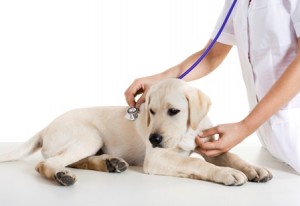Veterinary Scientists at the University of Liverpool are developing a national network for monitoring diseases, such as gastrointestinal, skin and respiratory conditions, in small animals.
The establishment of the Small Animal Veterinary Surveillance Network (SAVSNET) follows the conclusion of a three year pilot study to bring together data on diseases in pet animals across the UK. Researchers are aiming to understand which diseases certain breeds of animal are susceptible to; how infection spreads amongst animals in the UK; and whether there are particular disease ‘hotspots’ in certain regions of the country.
The study will now continue as part of the new national surveillance network in partnership with the British Small Animal Veterinary Association (BSAVA). It will provide a single resource for accessing data on pet animal diseases for veterinary scientists, veterinary surgeons, members of the public and policy makers. The network aims to improve health treatments and reduce the spread of infection amongst pet animals across the UK.
The pilot study has already shown that 7% of more than 5,000 animals that were seen by veterinary practices presented with vomiting or diarrhoea; 6% with itchy skin disease; 3% with respiratory disease; 2% with tumours; and less than 1% were seen for the treatment of aggression.
Researchers looked at how frequently and what types of antibiotics were used across a group of veterinary practices in England and Wales. The work aimed to further understanding into the types of diseases that were seen by vets and if there were any differences in the way they were treated.
The team found that 35% of sick dogs and 48% of cats received antibacterials as part of their consultation. The most common group of antibacterials used were called beta-lactams, which includes penicillin. Research showed that the 16 practices taking part in the study varied considerably in their use of these drugs, with some twice as likely to use them as others. This may suggest that different diseases are seen in different practices, or that practices treat them differently.
Researchers will make this data, and information from other studies, available to veterinary practices, as part of SAVSNET, so that vets can compare what they are doing with their peers and, if appropriate, change their practices for the benefit of national disease control.
Dr Alan Radford, from the University’s Institute of Infection and Global Health, said: “The latest news on diseases of horses and farm animals can be easily accessed from organisations such as the Animal Health and Veterinary Laboratories Agency, but information on small animal disease is very limited and often only found if it is published in a veterinary journal or magazine. This new network will provide surveillance of new and emerging diseases and a database that gives a national picture of the health of the country’s small animals and how it changes over time.
“Results from our pilot study highlight the need for this kind of information. Work on conditions such as diarrhoea and respiratory disease for example, show us that different practices in different parts of the country deal with the same sorts of diseases, but some may have a higher prevalence of certain health problems than others. Scientists can then take this data and try and understand why some areas are ‘hot spots’ for particular types of diseases.
“The frequency in which some drugs are used, may tell us why some bacteria in animals can become resistant to treatments, such as antibacterials for MRSA. We will also look at the role animal breeding may have on the susceptibility to disease such as heart problems and arthritis.”
BSAVA President Andrew Ash said: “High quality large scale epidemiological research helps us fulfil our obligations as a charity to public good. The information on disease surveillance gives us the information to treat animals better, and the research papers help us inform veterinary policy and education. This is an important scheme for both animal and human health.”
The SAVSNET pilot study began in 2008 with funding from Dechra, Defra, IntervetSP, Merial, Novarits, Pfizer and Virbac, and supported by BSAVA.
Pet owners wishing to contribute to SAVSNET should talk to their Veterinary surgeons. Veterinary surgeons and diagnostic laboratories wanting to take part should contact SAVSNET directly: http://www.liv.ac.uk/savsnet/
